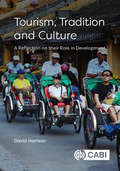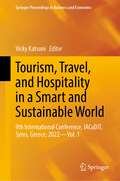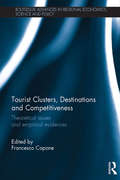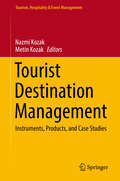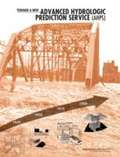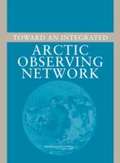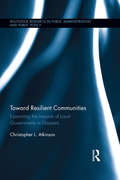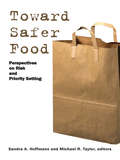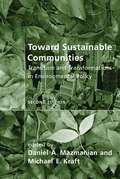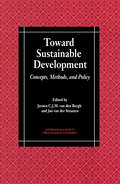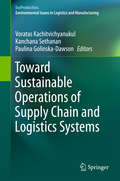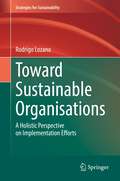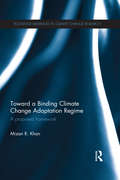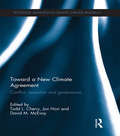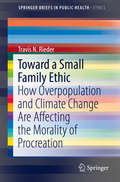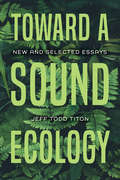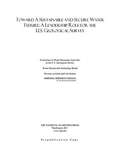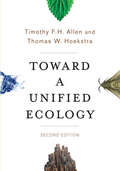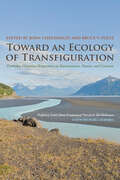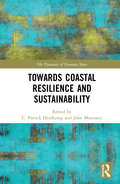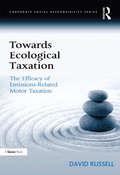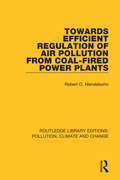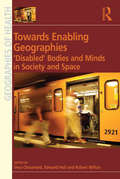- Table View
- List View
Tourism, Tradition and Culture: A Reflection on their Role in Development
by David HarrisonDavid Harrison has contributed to the academic study of tourism over the last 30 years. This book brings together a collection of his published material that reflects the role played by tourism in 'development', both in societies emerging from Western colonialism and in societies previously part of the Soviet system. The overarching theme looks at how, promoted as a tool for development, tourism can lead to conflict between competing elites, but can also empower groups previously subject to constraint by traditional authorities. Tradition is intensely manipulatable and always reflects power relations. Such pressure on tradition is but one aspect of tourism's wider social impacts. This includes changes in economic and social structure, which, for many, constitute social problems that need to be addressed. At the same time, 'sustainability', though apparently a worthy aim, can be a problematic concept, especially when applied to 'traditional' cultures, and may conflict with such ideals as egalitarianism.
Tourism, Travel, and Hospitality in a Smart and Sustainable World: 9th International Conference, IACuDiT, Syros, Greece, 2022 - Vol. 1 (Springer Proceedings in Business and Economics)
by Vicky KatsoniThis book features the second volume of the proceedings of the 9th International Conference of the International Association of Cultural and Digital Tourism (IACuDiT). Held at the Syros Island in Greece in September 2022, the conference's lead theme was ‘Tourism, Travel, and Hospitality in a Smart and Sustainable World’.With a full appreciation of the contributions made by numerous writers toward the progress in tourism research, this book presents a critical academic discourse on sustainable practices in a smart tourism context, stimulating future debates and advancing knowledge and understanding in this critical area of knowledge. It also puts emphasis on the knowledge economy and smart destinations notion. It enacts new modes of tourism management and development and presents chapters on emerging technologies, such as location-based services, Internet of Things, smart cities, mobile services, gamification, digital collections and the virtual visitor, social media, social networking, and augmented reality
Tourist Clusters, Destinations and Competitiveness: Theoretical issues and empirical evidences (Routledge Advances in Regional Economics, Science and Policy)
by Francesco CaponeTourism has become one of the largest and fastest growing sectors in the world economy. Increasingly, research on tourism destinations has been at the centre of debates concerning destination competitiveness, governance, policies and destination management and marketing. This book investigates tourist destinations from two different perspectives. First, it approaches destinations using the concept of tourist clusters and investigates their role in competitiveness and firm performances. The second perspective studies the development of models of competitiveness and governance. It also develops an international benchmarking system of 15-EU countries, with an additional focus on Italy, UK and United States. The book will appeal to academics, scholars and practitioners in tourism studies, management, urban and regional studies and economic geography, etc.
Tourist Destination Management: Instruments, Products, and Case Studies (Tourism, Hospitality & Event Management)
by Metin Kozak Nazmi KozakThis book provides a wide-ranging overview of the current state of tourist destination management and presents important recent research in the field. Contemporary theoretical and methodological approaches to management and marketing are discussed, and innovative practices with respect to both urban and rural destinations are described with the aid of many interesting case studies from across Europe and beyond. In addition, the volume addresses key issues such as governance, cooperation, the use of social media, and sustainability. A variety of influences on tourism development are examined, and efficient strategies for making destinations distinct are explored. The book will be a welcome addition and update to the existing literature and will be of interest to academics and practitioners alike.
Toward A New Advanced Hydrologic Prediction Service (ahps)
by National Research Council of the National AcademiesThe National Weather Service (NWS) is responsible for providing flood forecasts and warnings in the United States. The agency established the Advanced Hydrologic Prediction Services (AHPS) program in 1997 to advance technology for hydrologic services, specifically to provide accurate forecasts that support timely warnings for all users of hydrologic predictions. AHPS strives to provide information at the right time to facilitate adequate responses to mitigate damages to life, livelihoods, and property. AHPS is slated to be fully implemented nationwide in 2013. With seven years still remaining in its development and implementation timeline, a review of the program now is critical to providing NWS with information it needs to maximize the effectiveness of the AHPS program. This report assesses AHPS in respect to hydrologic science and technology research, river routing and mechanics, "systems" engineering aspects, and implementation. Overall, this report finds AHPS to be an ambitious program that promises to provide services and products that are timely and necessary. The report calls for AHPS to develop a detailed and comprehensive, multi-year implementation plan and for the program’s goals and budget to be brought into closer alignment.
Toward An Integrated Arctic Observing Network
by National Research Council of the National AcademiesObservable changes with regional and global implications, such as warming temperatures and reduced sea ice, are taking place across the Arctic. However, the record of Arctic observations suffers from incomplete geographic coverage and limited duration, and measurements are not well coordinated. This makes it difficult to comprehensively describe current conditions in the Arctic, let alone understand the changes that are underway or their connections to the rest of the Earth system. The U.S. National Science Foundation asked for guidance to help design a pan-arctic observing network. This book outlines the potential scope, composition, and implementation strategy for an arctic observing network. Such an integrated, complete, and multidisciplinary environmental observing network will improve society's understanding of and ability to respond to ongoing systemic changes in the Arctic and its capability to anticipate, predict, and respond to future change both in the Arctic and around the globe. The network would build on and enhance existing national and international efforts and deliver easily accessible, complete, reliable, timely, long-term, pan-arctic observations. Because many potential components of the network already exist or are being planned, and because of the surge of activity during the International Polar Year, there is an immediate opportunity for major progress.
Toward Resilient Communities: Examining the Impacts of Local Governments in Disasters (Routledge Research in Public Administration and Public Policy)
by Christopher L. AtkinsonIn June 2011, the city of Minot, North Dakota sustained the greatest flood in its history. Rather than buckling under the immense weight of the flood on a personal and community level, government, civic groups, and citizens began to immediately assess and address the event’s impacts. Why did the disaster in Minot lead to government and community resilience, whereas during Hurricane Katrina, the non-resilience of the government and community of New Orleans resulted in widespread devastation? This book seeks to answer that question by examining how local government institutions affect pre- and post-disaster community and business resilience. Utilizing both survey methods and interviews, Atkinson analyzes the disasters that occurred in New Orleans, Louisiana, Palm Beach County, Florida, and Minot, North Dakota. He argues that institutional culture within local government impacts not only the immediate outcomes experienced during response, but the long-term prognosis of recovery for a community outside the walls of city hall. Understanding tendencies within a community that lead to increased vulnerability of both individuals and businesses can lead to shifts in governmental/community priorities, and potentially to improved resilience in the face of hazard events. Relevant to scholars of public administration, disaster researchers, and government officials, this book contributes to a growing literature on community and business resilience. It explores not just the devastation of natural disasters, but profiles governmental impacts that led to responsive and able processes in the face of disaster.
Toward Safer Food: Perspectives on Risk and Priority Setting
by Sandra Professor Hoffmann Michael R. TaylorIn 1998, a National Academy of Sciences panel called for an integrated, risk-based food safety system. This goal is widely embraced, but there has been little advance in thinking about how to integrate knowledge about food safety risks into a system- wide risk analysis framework. Such a framework is the essential scientific basis for better priority setting and resource allocation to improve food safety. Sandra Hoffmann and Michael Taylor bring together leading scientists, risk analysts, and economists, as well as experienced regulators and policy analysts, to better define the priority setting problem and focus on the scientific and intellectual resources available to construct a risk analysis framework for improving food safety. Toward Safer Food provides a common starting point for discussions about how to construct this framework. The book includes a multi-disciplinary introduction to the existing data, research, and methodological and conceptual approaches on which a system-wide risk analysis framework must draw. It also recognizes that efforts to improve food safety will be influenced by the current institutional context, and provides an overview of the ways in which food safety law and administration affect priority setting. Hoffman and Taylor intend their book to be accessible to people from a wide variety of backgrounds. At the same time, they retain the core conceptual sophistication needed to understand the challenges that are inherent in improving food safety. The editors hope that this book will help the U.S. move beyond a call for an integrated, risk-based system toward its actual construction.
Toward Sustainable Communities: Transition and Transformations in Environmental Policy (American and Comparative Environmental Policy)
by Michael E. Kraft Daniel A. Mazmanian D. Mazmanian<p>A new edition with new and updated case studies and analysis that demonstrate the trend in U.S. environmental policy toward sustainability at local and regional levels. <p>This analysis of U.S. environmental policy offers a conceptual framework that serves as a valuable roadmap to the array of laws, programs, and approaches developed over the last four decades. Combining case studies and theoretical discussion, the book views environmental policy in the context of three epochs: the rise of command-and-control federal regulation in the 1970s, the period of efficiency-based reform efforts that followed, and the more recent trend toward sustainable development and integrated approaches at local and regional levels. It assesses the strengths and weaknesses of the new approaches and places these experiments within the larger framework of an emerging trend toward community sustainability. <p>Toward Sustainable Communities assesses environmental policy successes and failures at the subnational, regional, and state levels and offers eight case studies of policy arenas in which transformations have been occurring―from air and water pollution control and state and local climate change policy to open space preservation, urban growth, and regional ecosystem management. It discusses the various meanings of sustainability and whether the concept can serve as a foundation for a new era of environmental policy. The second edition has been substantially updated, with five new chapters (including the chapter on climate change) and all other chapters revised and shortened. It is suitable as a primary or secondary text for environmental policy courses and as a resource for scholars and policymakers.</p>
Toward Sustainable Development: Concepts, Methods, and Policy (Intl Society for Ecological Economics)
by International Society for Ecological Economics Jan van der Straaten Jeroen C.J.M. van den BerghToward Sustainable Development is a comprehensive and wide ranging exploration of the theoretical and practical aspects of the concept of sustainable development. Internationally known scholars present an in depth critique of traditional economic methods and ideas, and a new framework for analysis of issues of development and environmental policy. The book: outlines the historical development of the concept of sustainable developmentclarifies the many interpretations of what sustainable development ispresents new and detailed assessments of the concepts, methods, and implementation of sustainable development policiesAs well as explaining the conceptual and theoretical background, the book discusses methods and techniques, and examines issues of policy and implementation. It offers both critical observations on old approaches, and valuable guidelines for recent innovations.
Toward Sustainable Operations of Supply Chain and Logistics Systems
by Voratas Kachitvichyanukul Kanchana Sethanan Paulina Golinska-DawsonThis book addresses critical issues in today's logistics operations and supply chain management, with a special focus on sustainability. In dedicated chapters the authors address aspects concerning multimode logistics operations, reverse network configuration, forward and reverse supply chain integration, improvement of the production operations and management of the recovery activities, as well as carbon footprint reduction in transportation. Selected best practices from different countries and industries are presented to aid in the implementation of sustainable policies in private enterprises and at public-sector institutions. The book offers a valuable resource for both academics and practitioners who wish to deepen their expertise in the field of logistics operations and management with regard to sustainability issues. The book examines both qualitative and qualitative aspects of sustainable supply chain and logistics operations.
Toward Sustainable Organisations: A Holistic Perspective on Implementation Efforts (Strategies for Sustainability)
by Rodrigo LozanoThe book is one of the first ones focussing on how organisations (civil society, corporations, and public sector ones) are contributing to sustainability. The book starts by providing a discussion of the four dimensions of sustainability (economic, environmental, social, and time). The second chapter focusses on what organisations are, their system elements (e.g. operations and production, management and strategy, and governance), stakeholders, relationships within and between organisations (ranging from competition to collaboration), and a framework for organisations to understand and map how they can contribute to sustainability. The third chapter discusses the twenty-four main tools, initiatives, and approaches (TIAs) that have been developed for organisations to contribute to sustainability, such as Circular Economy, Corporate Social Responsibility, Environmental Management Systems, and Sustainability Reporting. The fourth chapter focusses on organisational change management for sustainability, including types of change, drivers for change, resistance to change, incorporation, and institutionalisation. The fifth chapter presents empirical evidence on what civil society organisations have contributed to sustainability, from priorities and impacts, TIAs, external stimuli, and internal factors, drivers for change, starts of change, and development of change. The sixth chapter presents empirical evidence on what corporations have contributed to sustainability, from priorities and impacts, TIAs, external stimuli, and internal factors, drivers for change, starts of change, and development of change. The seventh chapter presents empirical evidence on what public sector organisations have contributed to sustainability, from priorities and impacts, TIAs, external stimuli, and internal factors, drivers for change, starts of change, and development of change. The last chapter provides the conclusions of the book.The book is aimed at providing a multi-level, dynamic, and holistic perspective on the contributions of organisations to sustainability. The book's uniqueness lies in analysing organisations’ efforts to become more sustainability oriented and contribute to making societies more sustainable through systems thinking, TIAs, and change processes.
Toward a Binding Climate Change Adaptation Regime: A Proposed Framework (Routledge Advances in Climate Change Research)
by Mizan R. KhanFirst published in 2014. Routledge is an imprint of Taylor & Francis, an informa company.
Toward a Cultural Politics of Climate Change: Devices, Desires and Dissent
by Johannes Stripple Harriet Bulkeley Matthew PatersonTowards a Cultural Politics of Climate Change provides a new perspective on how climate change matters in policy-making, business and everyday life. It argues that the work of low carbon transitions takes place through the creation of devices, the mobilisation of desires, and the articulation of dissent. Using case studies from the US, Australia, and Europe, the book examines the creation and contestation of new forms of cultural politics - of how a climate-changed society is articulated, realized and contested. Through this approach it opens up questions about how, where and by whom climate politics is conducted and the ways in which we might respond differently to this societal challenge. This book provides a key reference point for the emerging academic community working on the cultural politics of climate change, and a means through which to engage this new area of research with the broader social sciences. Develops a new framework for analyzing the cultural politics of climate change, providing readers with a new perspective that bridges accounts of cultural responses to climate change and those which focus on its politics. Includes a range of international case studies which demonstrate the ways in which responses to climate change are being realized in everyday life, giving readers concrete examples from familiar areas of social and political life through which to interpret the new perspective. Provides a new approach to thinking about how climate change comes to matter in everyday life, for those seeking to look beyond 'individualist' approaches to understanding how society is responding to climate change.
Toward a Living Architecture?: Complexism and Biology in Generative Design
by Christina CogdellA bold and unprecedented look at a cutting-edge movement in architectureToward a Living Architecture? is the first book-length critique of the emerging field of generative architecture and its nexus with computation, biology, and complexity. Starting from the assertion that we should take generative architects&’ rhetoric of biology and sustainability seriously, Christina Cogdell examines their claims from the standpoints of the sciences they draw on—complex systems theory, evolutionary theory, genetics and epigenetics, and synthetic biology. She reveals significant disconnects while also pointing to approaches and projects with significant potential for further development. Arguing that architectural design today often only masquerades as sustainable, Cogdell demonstrates how the language of some cutting-edge practitioners and educators can mislead students and clients into thinking they are getting something biological when they are not. In a narrative that moves from the computational toward the biological and from current practice to visionary futures, Cogdell uses life-cycle analysis as a baseline for parsing the material, energetic, and pollution differences between different digital and biological design and construction approaches. Contrary to green-tech sustainability advocates, she questions whether quartzite-based silicon technologies and their reliance on rare earth metals as currently designed are sustainable for much longer, challenging common projections of a computationally designed and manufactured future. Moreover, in critiquing contemporary architecture and science from a historical vantage point, she reveals the similarities between eugenic design of the 1930s and the aims of some generative architects and engineering synthetic biologists today. Each chapter addresses a current architectural school or program while also exploring a distinct aspect of the corresponding scientific language, theory, or practice.No other book critiques generative architecture by evaluating its scientific rhetoric and disjunction from actual scientific theory and practice. Based on the author&’s years of field research in architecture studios and biological labs, this rare, field-building book does no less than definitively, unsparingly explain the role of the natural sciences within contemporary architecture.
Toward a New Climate Agreement: Conflict, Resolution and Governance (Routledge Advances in Climate Change Research)
by Jon Hovi David M. McEvoy Todd L. CherryClimate change is one of the most pressing problems facing the global community. Although most states agree that climate change is occurring and is at least partly the result of humans’ reliance on fossil fuels, managing a changing global climate is a formidable challenge. Underlying this challenge is the fact that states are sovereign, governed by their own laws and regulations. Sovereignty requires that states address global problems such as climate change on a voluntary basis, by negotiating international agreements. Despite a consensus on the need for global action, many questions remain concerning how a meaningful international climate agreement can be realized. This book brings together leading experts to speak to such questions and to offer promising ideas for the path toward a new climate agreement. Organized in three main parts, it examines the potential for meaningful climate cooperation. Part 1 explores sources of conflict that lead to barriers to an effective climate agreement. Part 2 investigates how different processes influence states’ prospects of resolving their differences and of reaching a climate agreement that is more effective than the current Kyoto Protocol. Finally, part 3 focuses on governance issues, including lessons learned from existing institutional structures. The book is unique in that it brings together the voices of experts from many disciplines, such as economics, political science, international law, and natural science. The authors are academics, practitioners, consultants and advisors. Contributions draw on a variety of methods, and include both theoretical and empirical studies. The book should be of interest to scholars and graduate students in the fields of economics, political science, environmental law, natural resources, earth sciences, sustainability, and many others. It is directly relevant for policy makers, stakeholders and climate change negotiators, offering insights into the role of uncertainty, fairness, policy linkage, burden sharing and alternative institutional designs.
Toward a Small Family Ethic
by Travis N. N. RiederThis thought-provoking treatise argues that current human fertility rates are fueling a public health crisis that is at once local and global. Its analysis and data summarize the ecological costs of having children, presenting ethical dilemmas for prospective parents in an era of competition for scarce resources, huge disparities of wealth and poverty, and unsustainable practices putting irreparable stress on the planet. Questions of individual responsibility and integrity as well as personal moral and procreative issues are examined carefully against larger and more long-range concerns. The author's assertion that even modest efforts toward reducing global fertility rates would help curb carbon emissions, slow rising global temperatures, and forestall large-scale climate disaster is well reasoned and more than plausible. Among the topics covered: · The multiplier effect: food, water, energy, and climate. · The role of population in mitigating climate change. · The carbon legacy of procreation. · Obligations to our possible children. · Rights, what is right, and the right to do wrong. · The moral burden to have small families. Toward a Small Family Ethic sounds a clarion call for bioethics students and working bioethicists. This brief, thought-rich volume steers readers toward challenges that need to be met, and consequences that will need to be addressed if they are not.
Toward a Sound Ecology: New and Selected Essays (Music, Nature, Place)
by Jeff Todd TitonHow does sound ecology—an acoustic connective tissue among communities—also become a basis for a healthy economy and a just community? Jeff Todd Titon's lived experiences shed light on the power of song, the ecology of musical cultures, and even cultural sustainability and resilience. In Toward a Sound Ecology, Titon's collected essays address his growing concerns with people making music, holistic ecological approaches to music, and sacred transformations of sound. Titon also demonstrates how to conduct socially responsible fieldwork and compose engaging and accessible ethnography that speaks to a diverse readership. Toward a Sound Ecology is an anthology of Titon's key writings, which are situated chronologically within three particular areas of interest: fieldwork, cultural and musical sustainability, and sound ecology. According to Titon—a foundational figure in folklore and ethnomusicology—a re-orientation away from a world of texts and objects and toward a world of sound connections will reveal the basis of a universal kinship.
Toward a Sustainable and Secure Water Future: A Leadership Role for the U.S. Geological Survey
by National Research Council of the National AcademiesWater is our most fundamental natural resource, a resource that is limited. Challenges to our nation's water resources continue to grow, driven by population growth, ecological needs, climate change, and other pressures. The nation needs more and improved water science and information to meet these challenges. Toward a Sustainable and Secure Water Future reviews the United States Geological Survey's (USGS) Water Resource Discipline (WRD), one of the nation's foremost water science organizations. This book provides constructive advice to help the WRD meet the nation's water needs over the coming decades. Of interest primarily to the leadership of the USGS WRD, many findings and recommendations also target the USGS leadership and the Department of Interior (DOI), because their support is necessary for the WRD to respond to the water needs of the nation.
Toward a Unified Ecology (Complexity in Ecological Systems)
by Timothy Allen Thomas HoekstraThe first edition of Toward a Unified Ecology was ahead of its time. For the second edition, the authors present a new synthesis of their core ideas on evaluating communities, organisms, populations, biomes, models, and management. The book now places greater emphasis on post-normal critiques, cognizant of ever-present observer values in the system. The problem it addresses is how to work holistically on complex things that cannot be defined, and this book continues to build an approach to the problem of scaling in ecosystems. Provoked by complexity theory, the authors add a whole new chapter on the central role of narrative in science and how models improve them. The book takes data and modeling seriously, with a sophisticated philosophy of science.
Toward an Ecology of Transfiguration: Orthodox Christian Perspectives on Environment, Nature, and Creation (Orthodox Christianity and Contemporary Thought)
by John Chryssavgis and Bruce V. FoltzCan Orthodox Christianity offer spiritual resources uniquely suited to the environmental concerns of today? This book makes the case emphatically that it can indeed. In addition to being the first substantial and comprehensive collection of essays, in any language, to address environmental issues from the Orthodox point of view, this volume (with contributions from many of the most influential theologians and philosophers in contemporary world Orthodoxy) will engage a wide audience, in academic as well as popular circles—resonating not only with Orthodox audiences but with all those in search of a fresh approach to environmental theory and ethics that can bring to bear the resources of ancient spirituality, often virtually unknown in the West, on modern challenges and dilemmas.
Towards Coastal Resilience and Sustainability (The Dynamics of Economic Space)
by John Morrissey C. Patrick HeidkampCoastal zones represent a frontline in the battle for sustainability, as coastal communities face unprecedented economic challenges. Coastal ecosystems are subject to overuse, loss of resilience and increased vulnerability. This book aims to interrogate the multi- scalar complexities in creating a more sustainable coastal zone. Sustainability transitions are geographical processes, which happen in situated, particular places. However, much contemporary discussion of transition is either aspatial or based on implicit assumptions about spatial homogeneity. This book addresses these limitations through an examination of socio- technological transitions with an explicitly spatial focus in the context of the coastal zone. The book begins by focusing on theoretical understandings of transition processes specific to the coastal zone and includes detailed empirical case studies. The second half of the book appraises governance initiatives in coastal zones and their efficacy. The authors conclude with an implicit theme of social and environmental justice in coastal sustainability transitions. Research will be of interest to practitioners, academics and decision- makers active in the sphere of coastal sustainability. The multi- disciplinary nature encourages accessibility for individuals working in the fields of Economic Geography, Regional Development, Public Policy and Planning, Environmental Studies, Social Geography and Sociology.
Towards Ecological Taxation: The Efficacy of Emissions-Related Motor Taxation (Corporate Social Responsibility)
by David RussellGovernments around the world are struggling to meet their commitments to achieve targets relating to reductions in greenhouse gases. Many writers advocating ways to achieve these targets offer radical but often impractical approaches that do not offer a way forward within the existing economic model. In contrast, Towards Ecological Taxation is a pragmatic consideration of realistic possibilities by an author from the world of accounting. Based on his research into the implications of changes in the UK motor taxation regime for company cars, David Russell considers the broader efficacy of taxation policy as a mechanism for reducing demand for fossil fuels and encouraging a shift towards carbon-neutral energy production. He incorporates the findings of a number of studies into his analysis, along with a wider consideration of tax regimes. Dr Russell suggests a way forward that will attract the interest of researchers, policy makers and decision makers wanting a better understanding of how taxation could be used innovatively, but within the existing economic status quo, to deliver specific and measurable reductions in CO2. Such a distinctive approach makes this book a valuable addition to the literature on environmental issues and the always thought provoking titles in the Corporate Social Responsibility Series.
Towards Efficient Regulation of Air Pollution from Coal-Fired Power Plants
by Robert O. MendelsohnOriginally published in 1979, this book discusses the model developed to deal with air pollution from coal fired power plants, but it broadly also illustrates how available scientific information can be organized to improve our understanding of pollution control. This information enables economists to discuss the relevant consequences of specific air pollution abatement strategies. In order to demonstrate the usefulness of a computer based environmental model, the model is applied to a specific case study. The object of the case study is the control of air pollution from a coal-fired, electrical generating station in New Haven, USA. The research contained in this volume advances applied risk analysis by combining the insights of economics and environmental sciences.
Towards Enabling Geographies: ‘Disabled’ Bodies and Minds in Society and Space (Geographies of Health Series)
by Edward HallOver the past 15 years, geography has made many significant contributions to our understanding of disabled people's identities, lives, and place in society and space. 'Towards Enabling Geographies' brings together leading scholars to showcase the 'second wave' of geographical studies concerned with disability and embodied differences. This area has broadened and challenged conventional boundaries of 'disability', expanding the kinds of embodied differences considered, while continuing to grapple with important challenges such as policy relevance and the use of more inclusionary research approaches. This book demonstrates the value of a spatial conceptualization of disability and disablement to a broader social science audience, whilst examining how this conceptualization can be further developed and refined.
